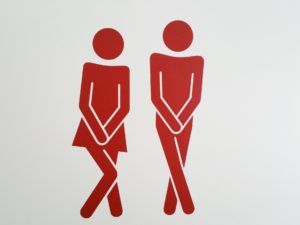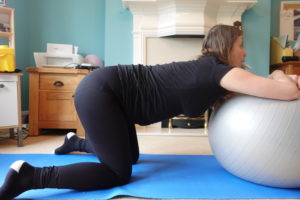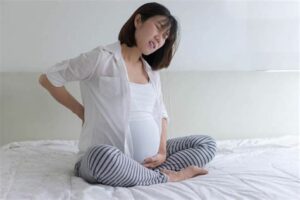Events in woman life as pregnancy and menopause but also disease (thyroid, cancer…) combine with an active life (impact sport and hyper pressure sport) and certain habits (smoking, alcohol consumption…) lead to body modification and urinary issues such as:
Bladder issues:

- Stress urinary incontinence: 30% to 50% of women suffer from this condition. Risk increase with number of pregnancy and age. It is characterized by urine leakage (not preceded by urgency) occurring when sneezing, laughing, coughing, and lifting or during physical activities (running, jumping…). In extreme cases, even walking can trigger it. This type of incontinence is due to a brutal abdominal pressure increase causing leaking through either hypermobility of the urethral canal (urinary canal) or sphincter failure (weakness of muscles blocking the urethra).
- Urgency micturition is a sudden irrepressible urge to urinate
- Urinary incontinence by urgency is an involuntary urine leakage preceded by compelling urge to urinate, leading sometimes to complete urination. This type of incontinence is caused by an involuntary contraction of the bladder and it is not link to physical activity. It is named instable bladder or hyperactive bladder. It can appear in certain situation associated with reflex micturition such as incontrollable laugh, fear, orgasm…
- Mixte urinary incontinence is a combination of two above dysfunctions
- Dysuria with post-micturition residue: Dysuria is characterized by a difficulty to empty the bladder, with or without associated pain. This dysfunction is commonly overlooked because painless and with a progressive apparition. Dysuria is often associated with urine leakage when standing up afterwards.
Rectal issues:
Anal leakage: Anal continence is a complex mechanism: As we eat, food is digested by our stomach then by our intestine to reach the last part named rectum. Two sphincters close the rectum: an internal one with an involuntary control and an external one with a voluntary control. As the stools arrive in the rectum, it distends the wall which is supposed to trigger the need to go to the loo. When it is not possible to go, a voluntary contraction, of the external sphincter and of another pelvis muscle named pubo rectal muscle, diminishes the need. After a while, the internal sphincter also contract but involuntary, allowing us not be forced to voluntary contract the external sphincter all the time without having to rush to the loo. When the external sphincter or other pelvis muscles are teared, the voluntary contraction is not possible anymore. Consequently, the time between the stools entering the rectum and having to exit is drastically shortened, we speak of anal incontinence. Rectum works as a tank collecting stool allowing a delayed elimination. However, if the rectal compliance is reduced, this tank is smaller and can’t conserve the stools compiling to eliminate them more frequently. On the opposite, if the rectal compliance is increased or if the rectal sensibility is impaired, stools will accumulate leading to anal incontinence by overflow. Rectum static dysfunctions are often the source of anal incontinence. For exteriorised prolapse (in very long labour or following use of forceps) anal incontinence is also frequent.



